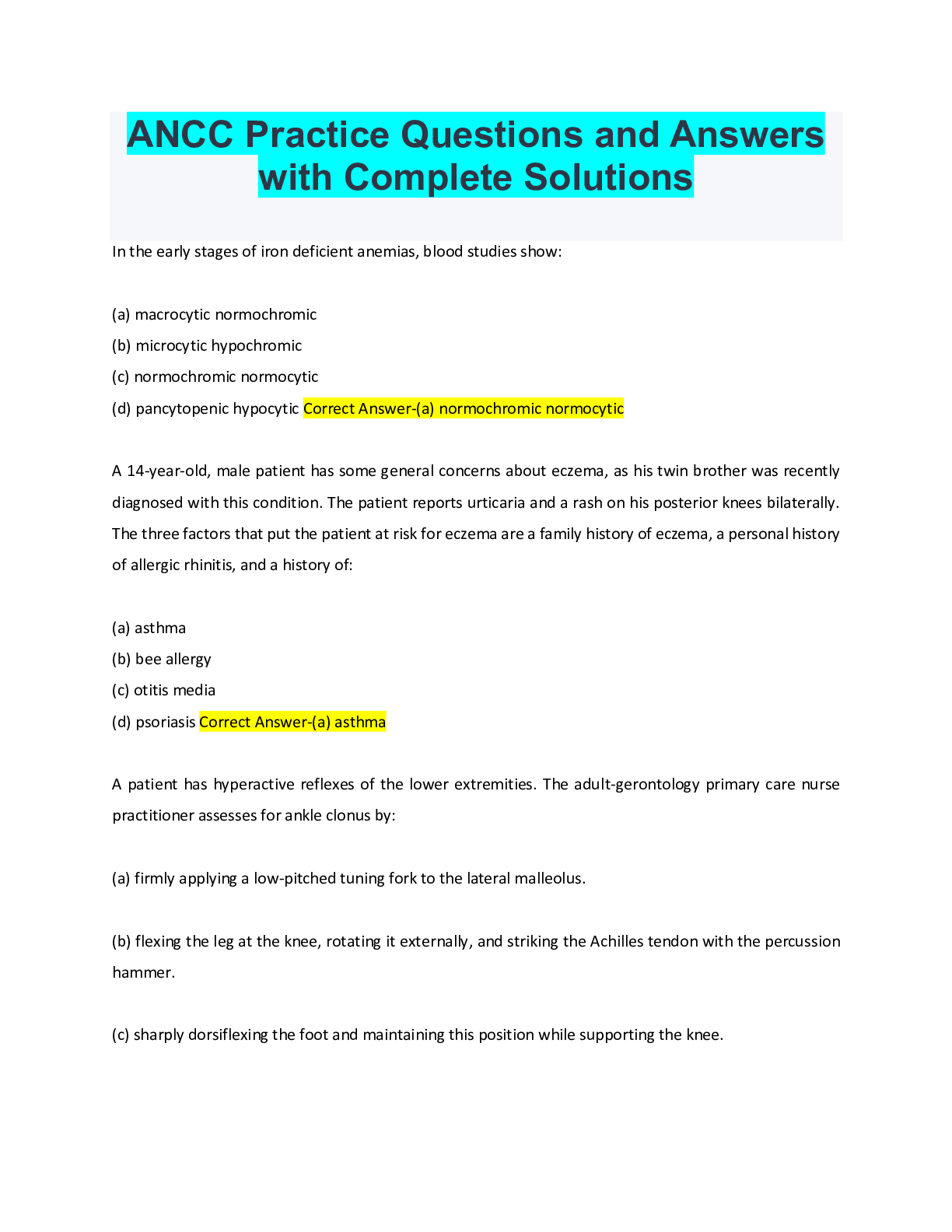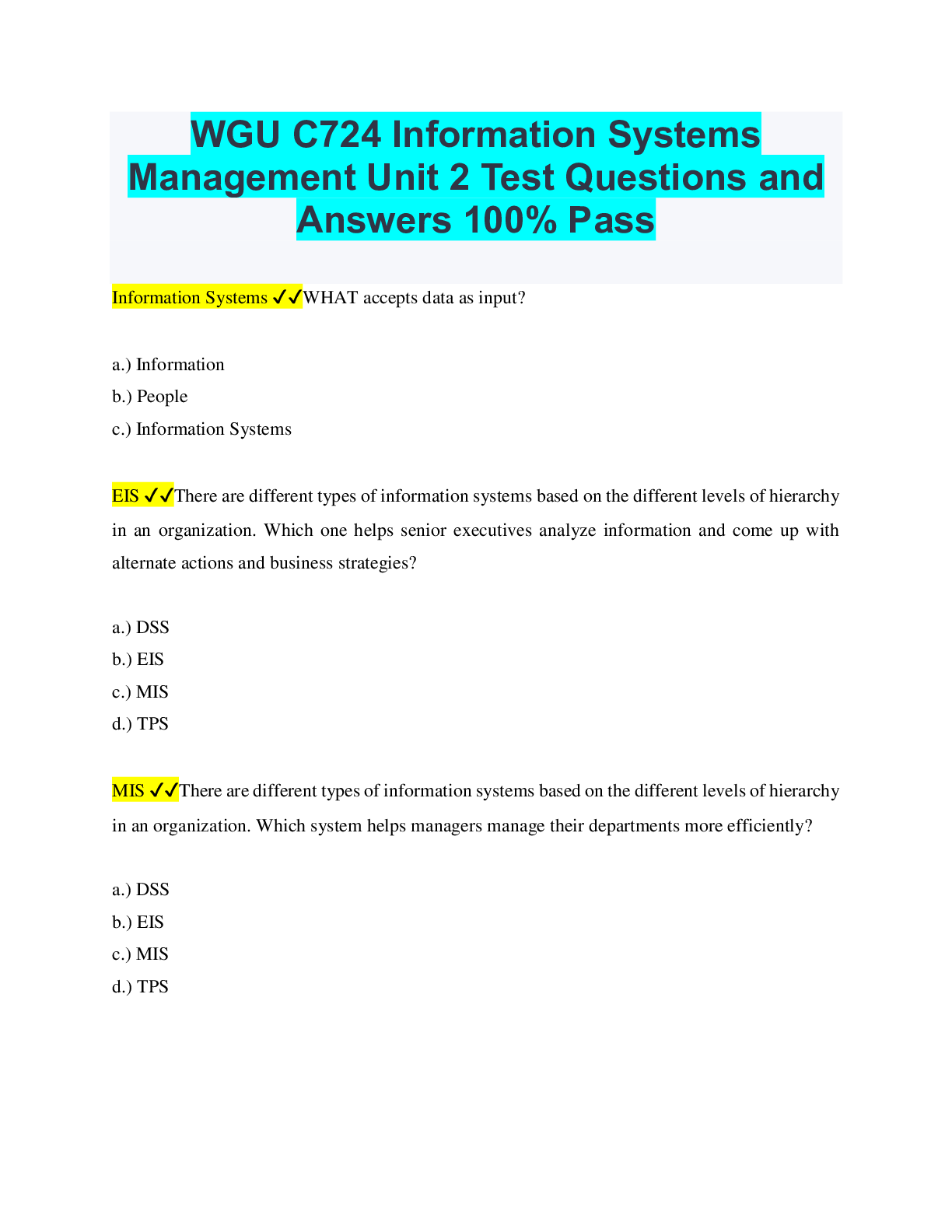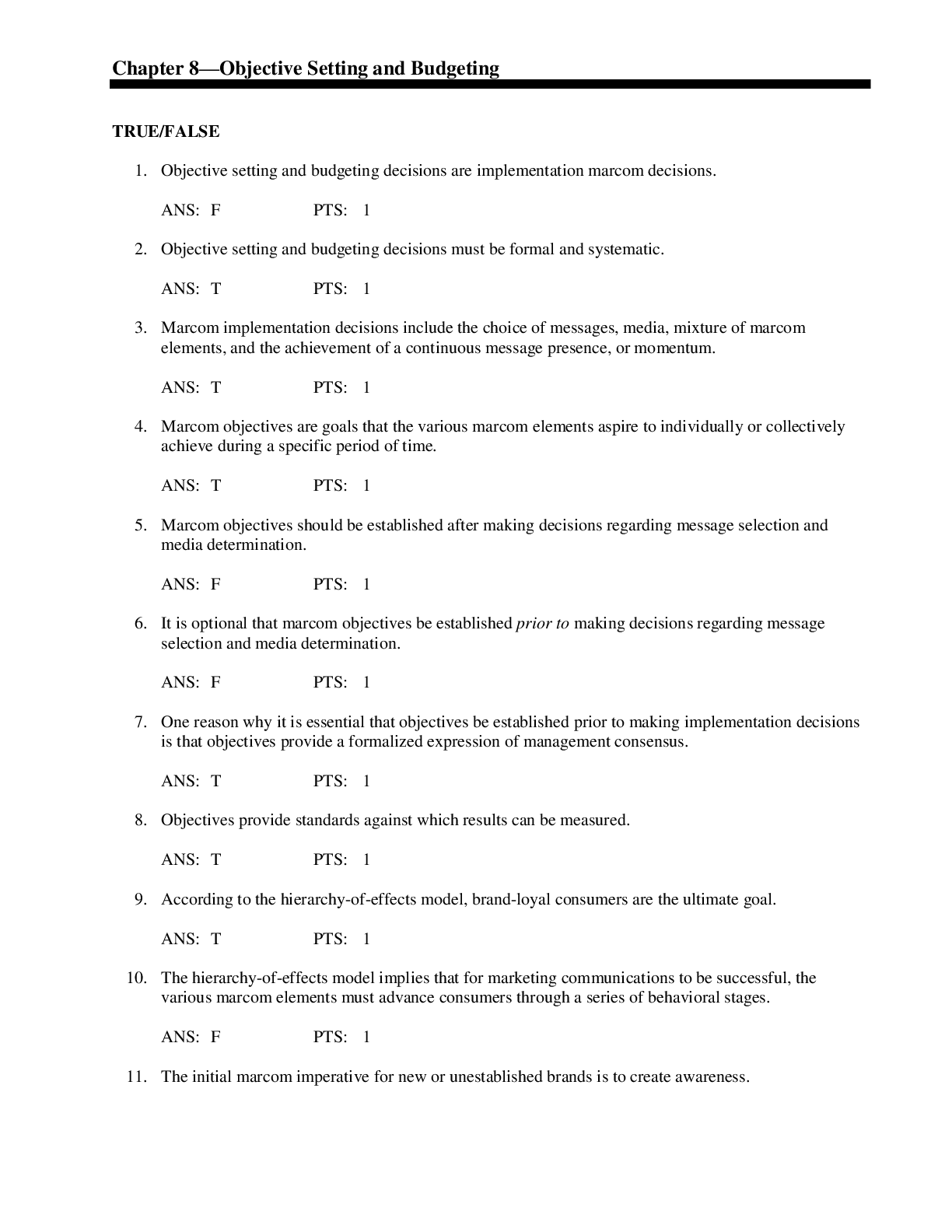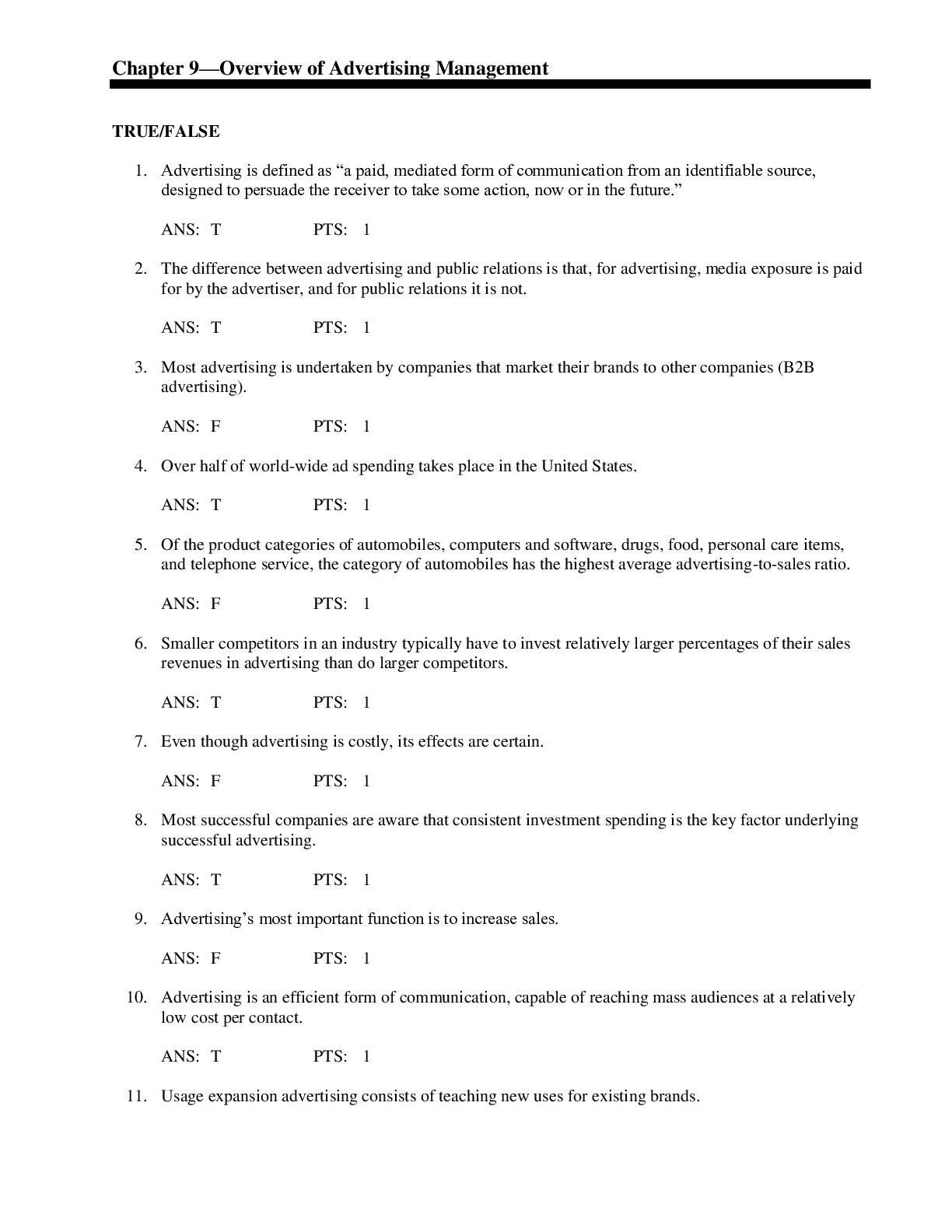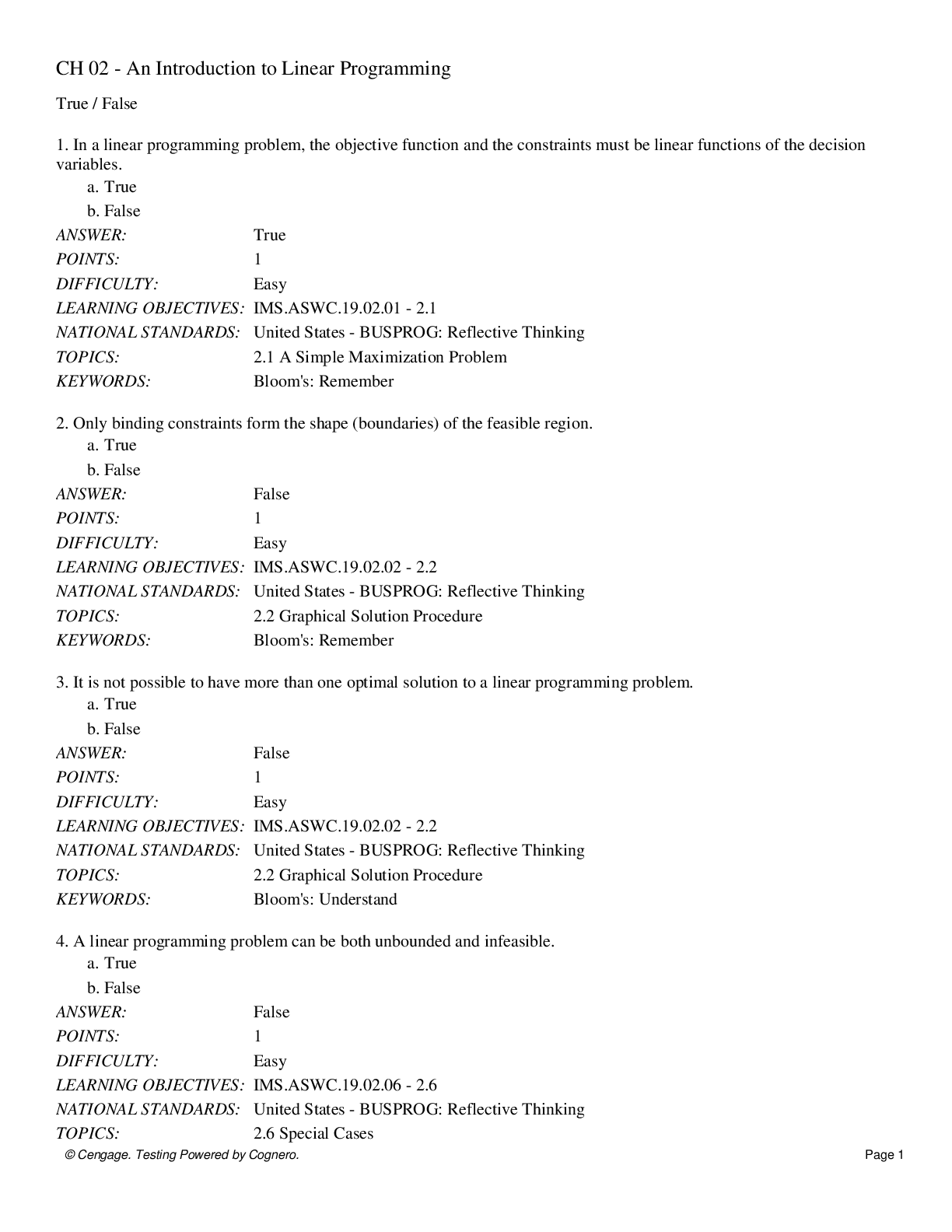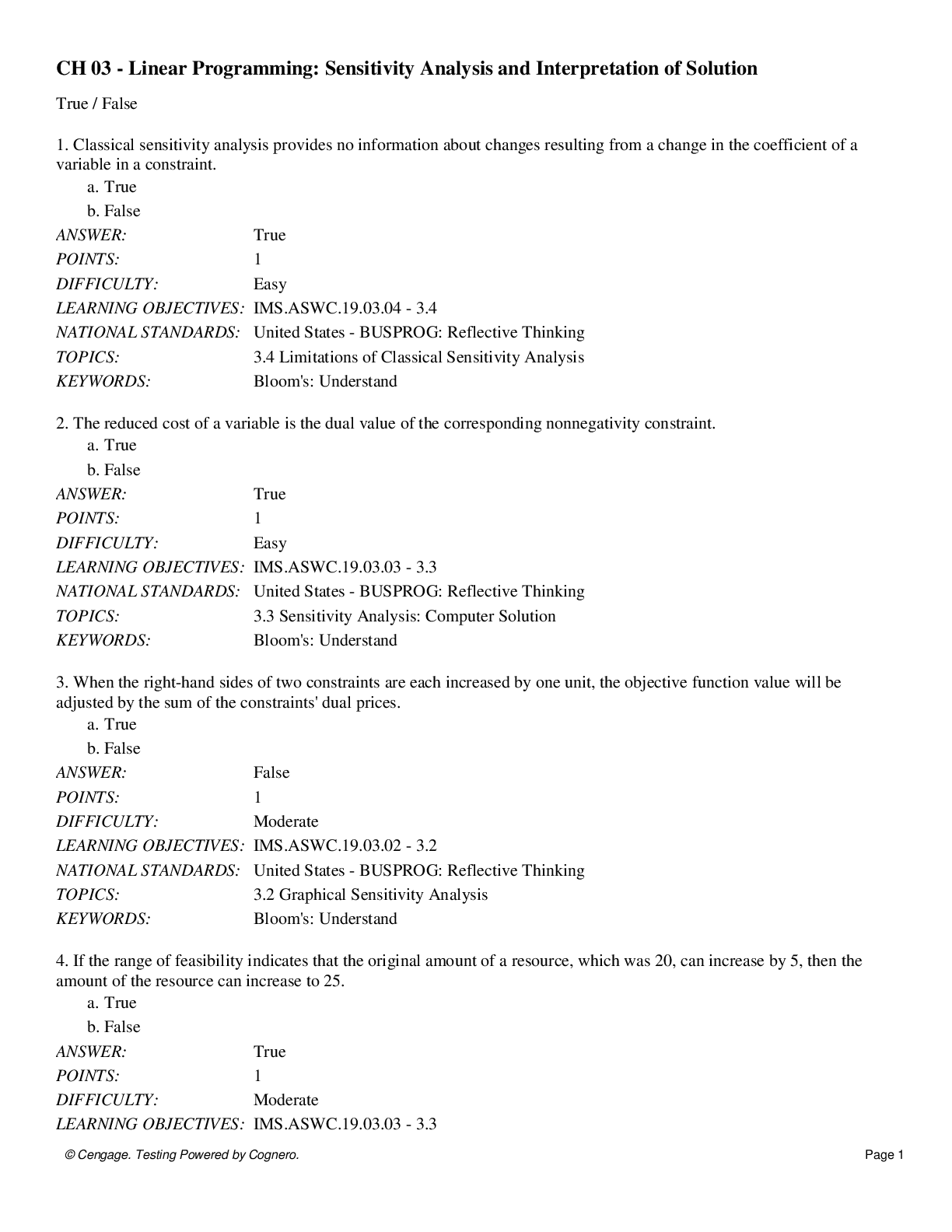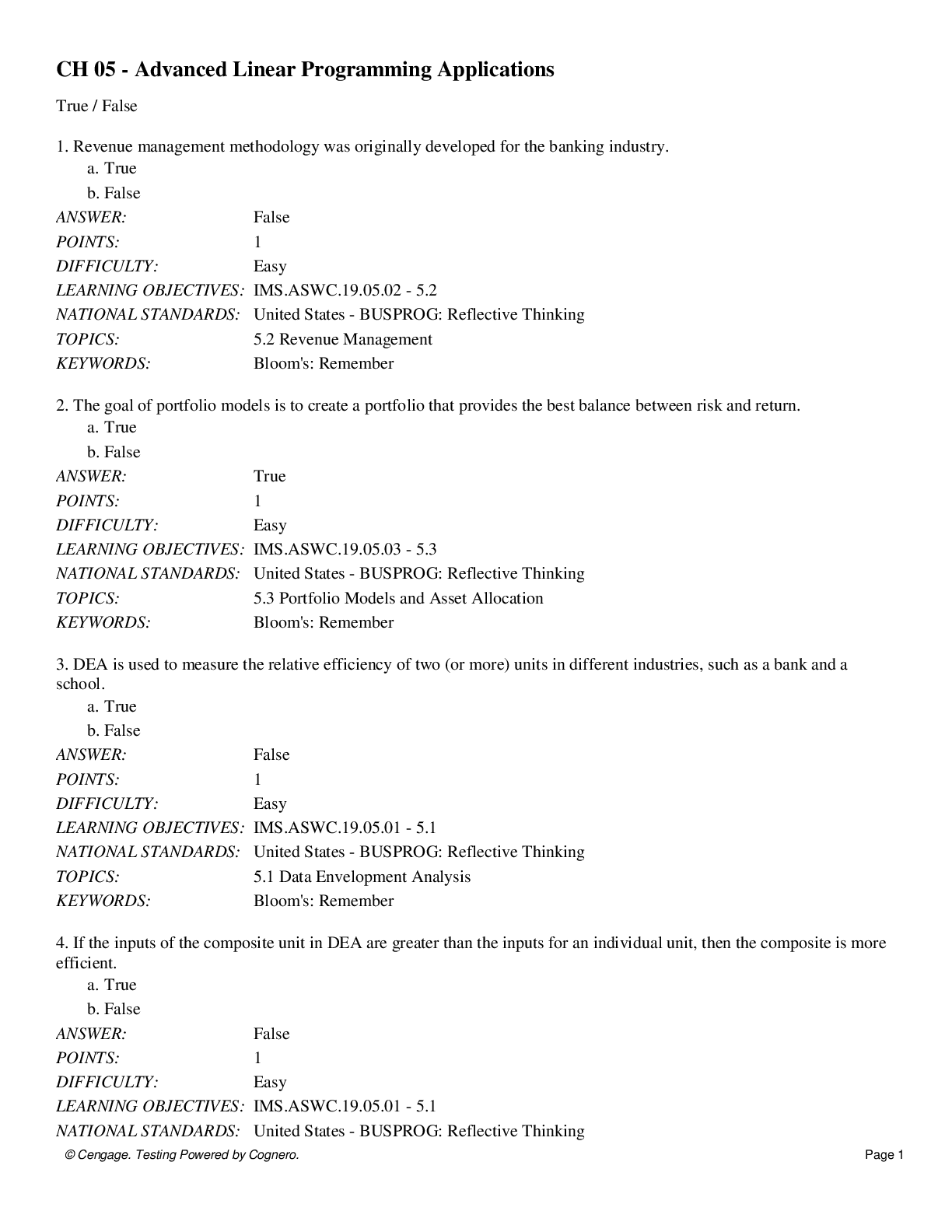Health Care > QUESTIONS & ANSWERS > ISSA Unit 1 – 31 Questions and Answers Already Passed (All)
ISSA Unit 1 – 31 Questions and Answers Already Passed
Document Content and Description Below
ISSA Unit 1 – 31 Questions and Answers Already Passed Muscle glycogen is the primary fuel used during endurance exercise. • True • False -✔✔ • False Catabolism and anabolism are th... e two phases of metabolism. • True • False -✔✔ • True ATP stands for: • Alpha tri-peptide • Adenosine triphosphate • Amino triphosphate • Acutely tense prostate -✔✔ • Adenosine triphosphate The primary fuel during endurance exercise is: • Liver glycogen • Muscle glycogen • Muscle • Fatty acids • None of the above -✔✔ • Fatty acids The ATP/CP pathway is sufficient for over four minutes of ATP production. • True • False -✔✔ • False BMR stands for: • Basic memory retention • Bad muscle recovery • Basal metabolic rate • Bregmatic myofascial release • None of the above -✔✔ • Basal metabolic rate Our muscles can produce ATP by which of the following pathways? • ATP/CP pathway • Glycolytic pathway • Oxidative pathway • All of the above • None of the above -✔✔ • All of the above Oxidative glycolysis is reliable for: • 3 to 15 seconds of ATP production • Physical activities lasting more than 2 minutes in duration • Over four minutes of ATP production • Physical activities lasting 4 to 50 seconds in duration • All of the above -✔✔ • Physical activities lasting more than 2 minutes in duration Hemoglobin is an oxygen transporting protein in red blood cells. • True • False -✔✔ • True Hormones are classified as: • Steroids • Amino acid derivatives • Peptides • All of the above • None of the above -✔✔ • All of the above Excretion is one function of the digestive system. • True • False -✔✔ • True The main purpose of hormones is to: • Alter the rate of synthesis of your cellular protein • Change the rate of enzyme activity • Change the rate of transport of nutrients through the cell wall • All of the above • None of the above -✔✔ • All of the above .) The circulatory system consists of: • Lungs, mouth, throat, trachea, and bronchi • Mouth, esophagus, stomach, and gallbladder • Heart, arteries, and veins • None of the above • All of the above -✔✔ • Heart, arteries, and veins The respiratory system is responsible for: • Supplying oxygen to the body • Eliminating carbon dioxide in the body • Regulating the body's pH balance • A and B • A, B, and C -✔✔ • A, B, and C About 98% of the human body is composed of only six elements: oxygen, carbon, hydrogen, nitrogen, calcium, and phosphorous. • True • False -✔✔ • True The nervous system is made up of the: • Peripheral nervous system • Central nervous system • Proximal nervous system • A and B • None of the above -✔✔ • A and B [Show More]
Last updated: 1 year ago
Preview 1 out of 18 pages
Instant download

Buy this document to get the full access instantly
Instant Download Access after purchase
Add to cartInstant download
Reviews( 0 )
Document information
Connected school, study & course
About the document
Uploaded On
Mar 20, 2023
Number of pages
18
Written in
Additional information
This document has been written for:
Uploaded
Mar 20, 2023
Downloads
0
Views
71

.png)
.png)




